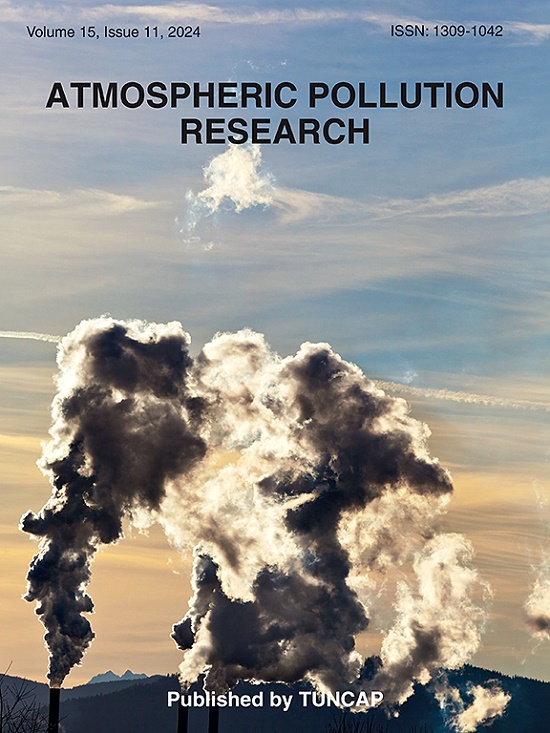A decade of changes in potential sources and chemical composition of PM2.5 from Huangshi in central China
IF 3.9
3区 环境科学与生态学
Q2 ENVIRONMENTAL SCIENCES
引用次数: 0
Abstract
This study investigates decadal changes in PM2.5 sources and chemical composition in Huangshi, a metallurgical and industrial city in Central China. PM2.5 samples were collected from 2021 to 2023 and analyzed for water-soluble inorganic ions, carbonaceous species, and inorganic elements using ion chromatography, thermal-optical reflectance, and X-ray fluorescence. Positive Matrix Factorization and the HYSPLIT model were applied to determine pollution sources and transport pathways. Compared to 2012–2013, PM2.5 concentrations declined significantly, primarily due to reduced local emissions. However, secondary aerosols originating from long-range transport, particularly from northern China, Mongolia, and Kazakhstan, now dominate PM2.5 composition. Contributions from fossil fuel combustion, industrial activities, and vehicular emissions have decreased, while an increased NO3−/SO42− ratio suggests a shift from stationary to mobile sources. These findings highlight the effectiveness of emission control policies in reducing local anthropogenic pollution, leading to a greater relative contribution from secondary aerosols. This study provides critical insights into the evolving PM2.5 composition and its sources, supporting the development of more effective air quality management strategies.

中国中部黄石PM2.5潜在来源和化学成分的十年变化
本研究调查了中国中部冶金工业城市黄石市PM2.5来源和化学成分的年代际变化。于2021年至2023年收集PM2.5样本,并使用离子色谱、热光学反射和x射线荧光分析水溶性无机离子、碳质物质和无机元素。采用正矩阵分解和HYSPLIT模型确定污染源和输送途径。与2012-2013年相比,PM2.5浓度明显下降,主要原因是当地排放量减少。然而,来自远距离运输的次生气溶胶,特别是来自中国北方、蒙古和哈萨克斯坦的次生气溶胶,现在主导了PM2.5的组成。化石燃料燃烧、工业活动和车辆排放的贡献已经减少,而NO3−/SO42−比值的增加表明从固定源向移动源的转变。这些发现强调了排放控制政策在减少当地人为污染方面的有效性,导致二次气溶胶的相对贡献更大。这项研究对PM2.5组成及其来源的演变提供了重要见解,支持制定更有效的空气质量管理策略。
本文章由计算机程序翻译,如有差异,请以英文原文为准。
求助全文
约1分钟内获得全文
求助全文
来源期刊

Atmospheric Pollution Research
ENVIRONMENTAL SCIENCES-
CiteScore
8.30
自引率
6.70%
发文量
256
审稿时长
36 days
期刊介绍:
Atmospheric Pollution Research (APR) is an international journal designed for the publication of articles on air pollution. Papers should present novel experimental results, theory and modeling of air pollution on local, regional, or global scales. Areas covered are research on inorganic, organic, and persistent organic air pollutants, air quality monitoring, air quality management, atmospheric dispersion and transport, air-surface (soil, water, and vegetation) exchange of pollutants, dry and wet deposition, indoor air quality, exposure assessment, health effects, satellite measurements, natural emissions, atmospheric chemistry, greenhouse gases, and effects on climate change.
 求助内容:
求助内容: 应助结果提醒方式:
应助结果提醒方式:


